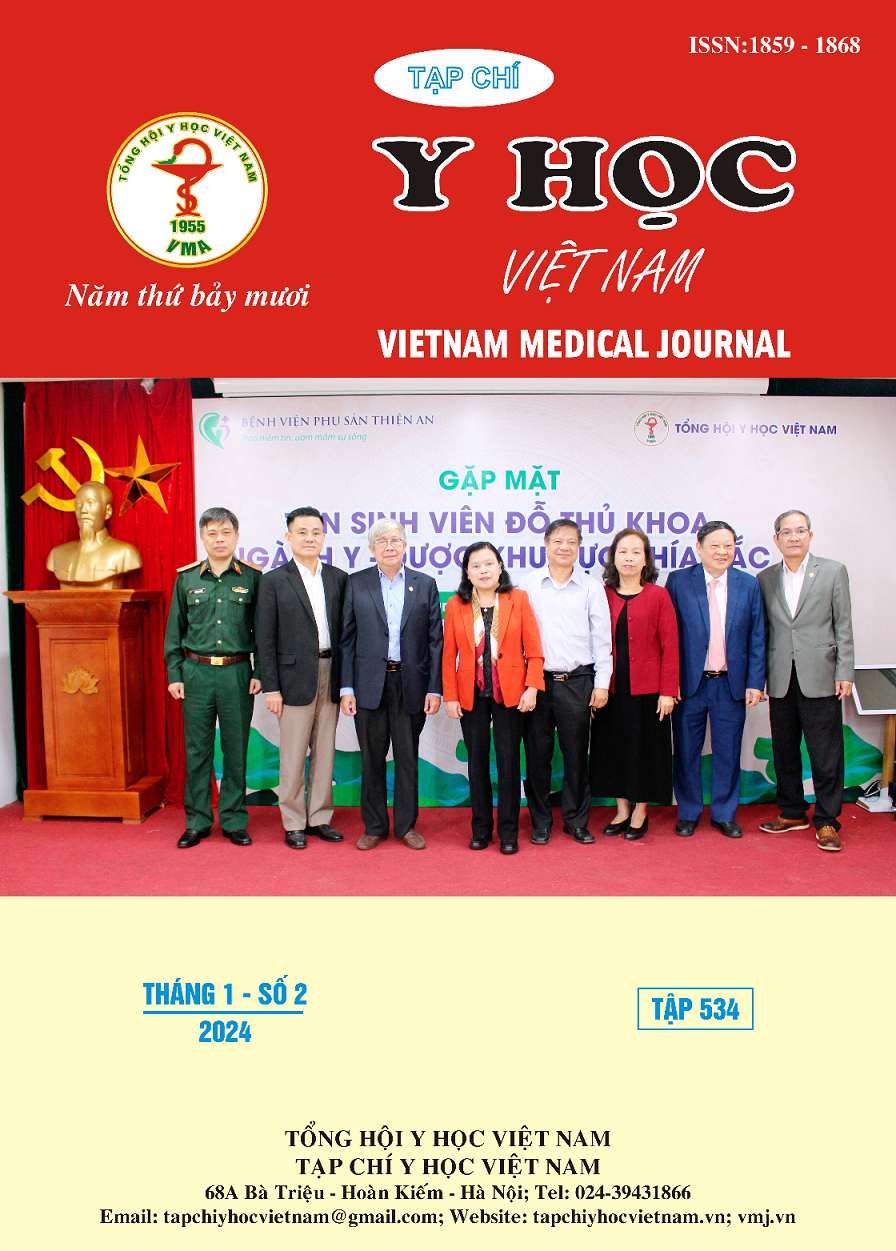EVALUATION RELATIONSHIP BETWEEN SHOCK INDEX WITH SEVERITY OF PATIENTS WITH POLYTRAUMA
Main Article Content
Abstract
Objective: To evaluation relationship between shock index with other indices predicting the severity of trauma: RTS, ISS, lactat, BE. Materials and method: 82 patients diagnosed with polytrauma (without traumatic brain injury and spinal cord injury) were admitted to the emergency operating room within the first 24 hours of injury. We determined the mean, correlation between the shock index at the time of admission with RTS, ISS, blood lactate and BE (base excess) concentrations. Result: The shock index showed a positive correlation, of moderate strength, with the ISS score at the time of admission (r=0.37,p < 0.05). The shock index was inversely correlated with the RTS score, with a tight degree of correlation (r= -0.54, p < 0.05). Additionally, the shock index exhibited a positive correlation with blood lactate levels (r=0.68, p < 0.05). The mean shock index in patients with ISS 25-40 was 1.03 ± 0.28; RTS ≤ 9 was 1.77±0.54; lactat >2mmol/l was 1.20±0.36; BE ≤ -6 was 1.37 ± 0.4. Conclusion: The shock index showed positive correlation with ISS and blood lactat, inversely correlation with RTS and blood BE.
Article Details
References
2. Vũ Thị Kiều Ngân. Đánh giá sự thay đổi và giá trị tiên lượng của lactat máu ở bệnh nhân chấn thương nặng.
3. Phạm Thái Dũng. Nghiên cứu mối tương quan giữa nồng độ lactat, độ bão hòa oxy máu tĩnh mạch trung tâm với chỉ số sốc và tỉ lệ PaO2/ FiO2 ở bệnh nhân đa chấn thương. Accessed September 24, 2023. http://thuvien.hmu.edu. vn/pages/cms/FullBookReader.aspx?Url=/pages/cms/TempDir/books/202
4. Pfeifer R, Teuben M, Andruszkow H, Barkatali BM, Pape HC. Mortality Patterns in Patients with Multiple Trauma: A Systematic Review of Autopsy Studies. PloS One. 2016;11(2): e0148844. doi:10.1371/journal.pone.0148844
5. Birkhahn RH, Gaeta TJ, Terry D, Bove JJ, Tloczkowski J. Shock index in diagnosing early acute hypovolemia. Am J Emerg Med. 2005;23(3): 323-326. doi: 10.1016/ j.ajem. 2005.02. 029
6. King RW, Plewa MC, Buderer NM, Knotts FB. Shock index as a marker for significant injury in trauma patients. Acad Emerg Med Off J Soc Acad Emerg Med. 1996;3(11):1041-1045. doi:10.1111/ j.1553-2712.1996.tb03351.x
7. Rixen D, Raum M, Bouillon B, Lefering R, Neugebauer E, Unfallchirurgie the A “Polytrauma of the DG für. Base deficit development and its prognostic significance in posttrauma critical illness: an analysis by the trauma registry of the deutsche gesellschaft für unfallchirurgiE. Shock. 2001;15(2):83.
8. Cannon CM, Braxton CC, Kling-Smith M, Mahnken JD, Carlton E, Moncure M. Utility of the shock index in predicting mortality in traumatically injured patients. J Trauma. 2009; 67(6): 1426-1430. doi: 10.1097/ TA. 0b013e3181bbf728


